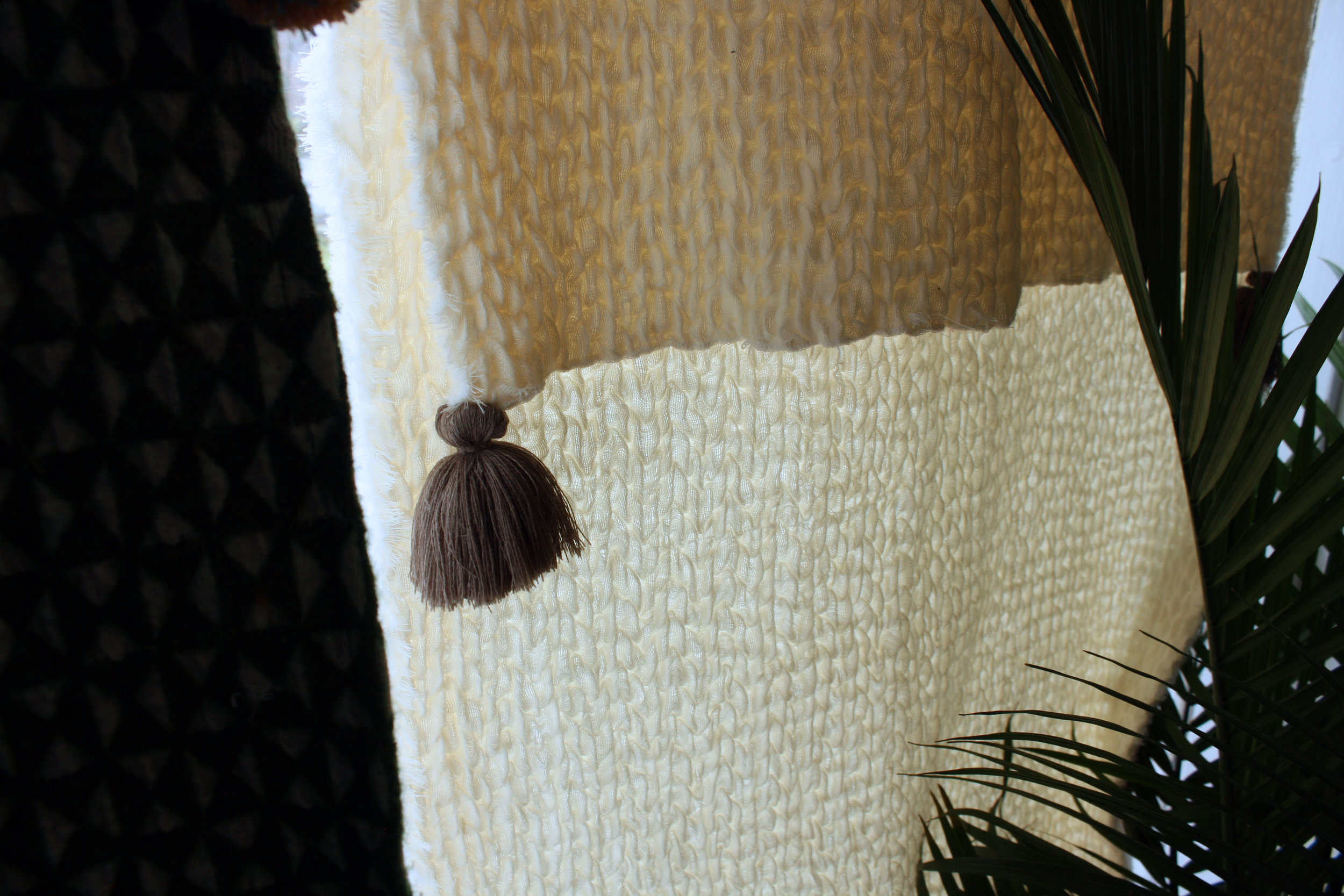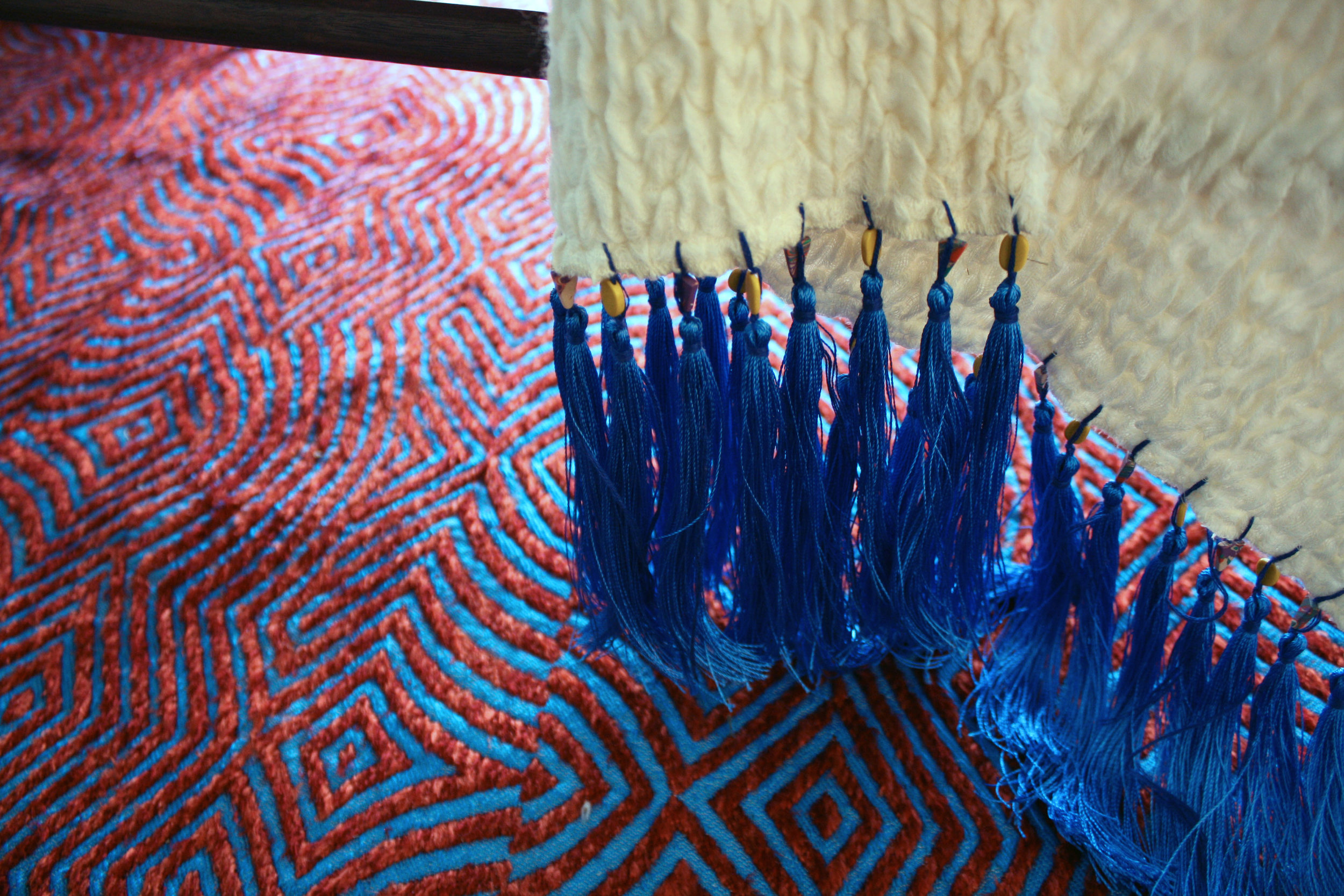Chivu Nako
'don't touch'
Ironically named, Chivu Nako translates from Kshatriya into ‘Don’t Touch’; a familiar phrase heard throughout our childhood, despite our sense of touch being our most primal means of learning and exploring.
Chivu Nako’s fabrics thrive to entice finger tips and palms, to touch, stroke and scrunch their body; to evoke a sensation or build a mood. They implore interaction. They may be draped on the human form, to move and react as the body does, or befit an interior space through accessories that may be squeezed, cozied under or sat upon.
This collection of fabrics is inspired by two deeply integrated behaviors in human beings; our life long endeavor to find routine in our lives, and our feelings and expectations towards texture.
From the beginning of life, we become habituated to types of surfaces and what they signify; softness implies security and comfort while roughness implies rigidity and hostility. Studies show that this behavior derives from our mammalian instincts. When we are in a negative state of mind our instincts encourage us to find pleasure through tactile stimulation. We seek out surfaces that mitigate that negative state so we may return to being in a positive state of mind.
As humans we strive to find routine in our lives. Our petty habits become lifelong rituals, which give us a sense of security and stability. We adopt and rely on consistencies on a day to day basis and form traditions over generations to retain order in our lifestyles and create an identity. It’s instinctual to us to be drawn to familiarity. Whether consciously or subconsciously, we seek out others that share or empathize with our habits, creating inherent connections. Through shared habits and traditions, we form communities and societies, from college basketball teams to religions.
The integration of habit, ritual and tradition can be seen most vibrantly in the ceremonies of the native tribes of Papua New Guinea, where tribespeople dress, paint and embellish themselves in magnificent colors and vast materials, demonstrating status, age, wealth, strength, ancestry and associations with other clans. These extremely social rituals and symbolic dress are integral in maintaining open communication, understanding and unity¬ of the community. The immense detail and symbolic significance of every color, feather, shell and more is captured in Malcolm Kirk’s volume of photographs in ‘Man as Art’.
The textiles in Chivu Nako use Kirk’s brilliant images to influence color, pattern and texture, ensuring the visual and tactile characteristics of the fabrics are given equal importance. The collection aims to satisfy both sensory inputs of sight and touch. The composition of color and texture, play with light and shadow created by the subtle projections in the fabric which intend to entice you through sight.
There is just enough surface interest to identify that the fabric holds an intriguing texture, which begs the viewer to approach, interact with and explore the unfamiliar surface. The fabrics of this collection are dramatically different from one another in surface and material, but they all carry rhythm and repetition within them through structure and color. Each textile maintains a consistent pattern throughout its surface as a reference to the familiarity and identity we build through lifelong habits and traditions.













